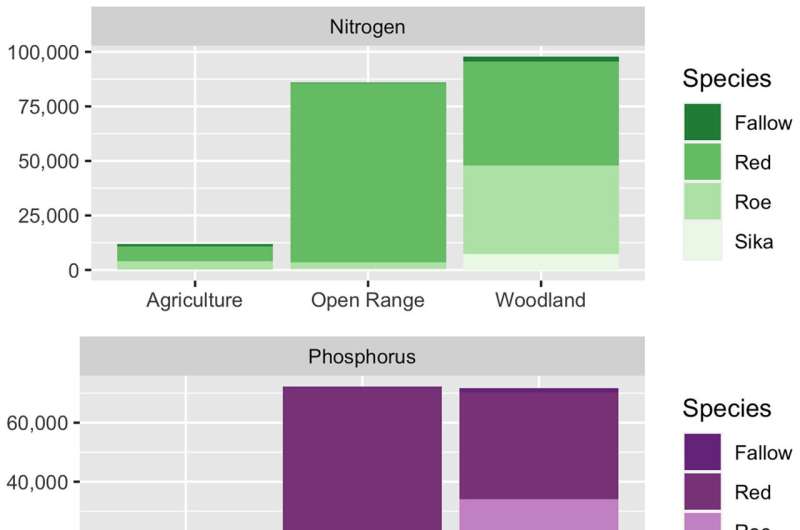This article has been reviewed according to Science X's editorial process and policies. Editors have highlighted the following attributes while ensuring the content's credibility:
fact-checked
trusted source
proofread
Clearance of deer cull carcasses is a loss to ecosystem, finds Scotland study

The removal of deer bodies following annual culls in Scotland may be depriving the environment of essential nutrients, according to a new study published in Ecological Solutions and Evidence.
Ecologists estimate that the clearance of deer carcasses prevents hundreds of thousands of kilos of vital minerals from re-entering the environment every year.
This loss could undermine the long-term success of habitat recovery efforts, experts say.
Environmental benefits
In Scotland, deer populations have been actively managed since 1959, primarily to control over-browsing—eating shoots and leaves of trees and shrubs.
Researchers at the University of Edinburgh and Yale University used nationwide cull data on red, roe, fallow, and sika deer between 2010 and 2022 to calculate annual nutrient losses. They estimated levels of phosphorus, nitrogen and calcium for each deer species based on their average body and antler size.
They calculated that 251,188 kg of calcium, 195,652 kg of nitrogen and 152,834 kg of phosphorus are lost across Scotland each year.
The research team says that the loss of calcium has a bigger environmental impact than loss of nitrogen or phosphorus. Low-calcium soils can hinder commercial and native woodland regeneration, and can have knock-on effects for birds, which experience declines in shell thickness in low-calcium environments.
Carcasses also bring other ecosystem benefits, such as being a food source for small predators including pine martens. Carcasses have also been shown to distract predators from ground-nesting birds, such as capercaillies, during the breeding season.
"The results of our study call for deer managers to reconsider current practices and integrate approaches that retain a proportion of deer carcasses within ecosystems.
"While we specifically look at nutrients and do not assess other environmental impacts of carcasses or make a value judgment on deer culling, our findings will help guide evidence-based recommendations for deer and nutrient management to better protect Scotland's plans for large-scale ecosystem recovery and sustainable wildlife management," said Chris Hirst, co-author of the study, from the University of Edinburgh's Roslin Institute.
Possible solutions
The researchers propose two solutions for retaining nutrients from deer carcasses in the environment.
The first is for culled deer carcasses to be left where they fall.
An alternative method is to reduce the number of culls and allow deer to die naturally in the landscape, potentially through the reintroduction of natural predators to manage deer numbers.
"Through predation, both the consumed carcass and what is left behind would ultimately remain in the ecosystem. Further, due to the way in which predators hunt, they would also create heterogeneity in carcass distribution on the landscape, creating hotspots of nutrients that would be difficult for human-hunting to replicate," said Kristy Ferraro, lead author of the study, from the Yale School of the Environment.
The researchers warn that their findings are estimates, and future experiments are needed to analyze carcass decomposition and environmental features to directly evaluate ecosystem impact.
They add that their outcomes are likely to underestimate actual nutrient losses, because the records of deer culling in Scotland exclude deaths, for example, from vehicle accidents.
More information: Kristy M. Ferraro et al, Missing carcasses, lost nutrients: Quantifying nutrient losses from deer culling practices in Scotland, Ecological Solutions and Evidence (2024). DOI: 10.1002/2688-8319.12356
Provided by University of Edinburgh



















